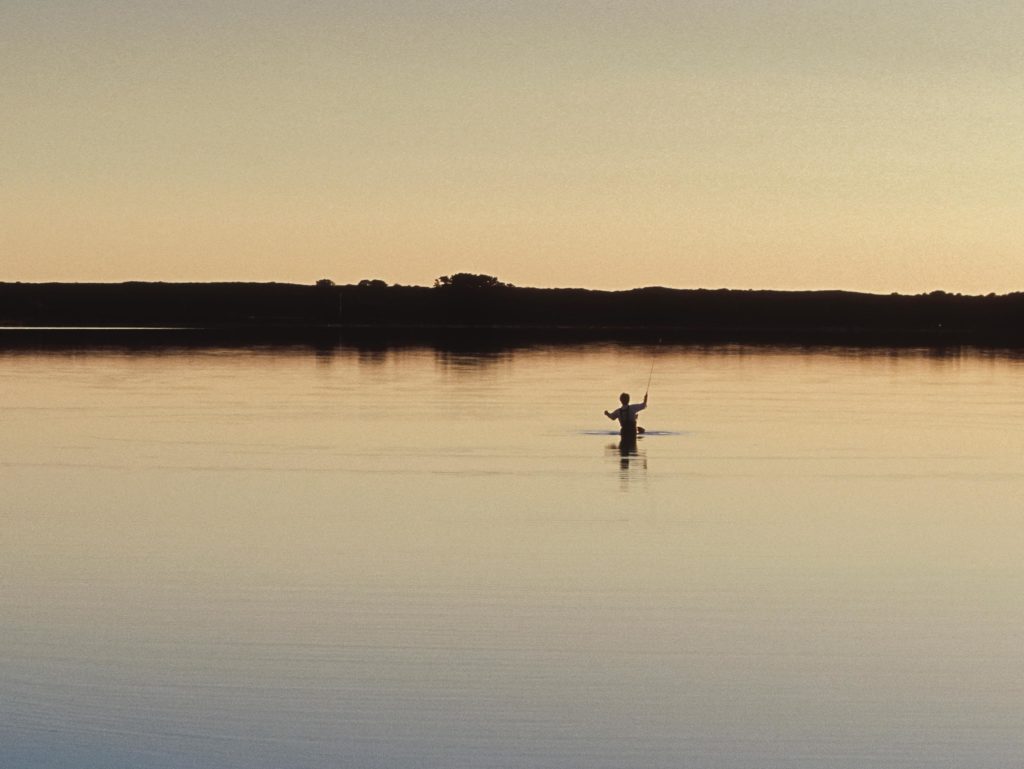
Among the many species I’ve pursued around the globe, striped bass still hold top ranking on my list, and my favorite place to engage with this rugged fish is in the clear shallows of New England.
For the ultimate striper challenge, an experience that marries the demanding flats fishing for bonefish with a hint of tropical reef wading for aggressive trevally, look to the coastal flats of Narragansett Bay, the Elizabethan Islands, Block Island and the waters around Cape Cod, where light sandy bottom peppered with boulders, carpets of eelgrass and shellfish beds draws plenty of hungry stripers.
Striped bass, ranging from packs of school-size 5- to 15-pounders in the deeper channels to lone fish as large as 50 pounds, routinely prowl and hunt these clear flats and shorelines.
They may appear as dark shadows against the sand, or as silver-green phantoms with fins glowing ultraviolet purple. When the tide is right and the moon fat, these fish readily take gaudy lures and flies. Cast beyond them and retrieve with the tide, from shallow to deeper water, across their travel path.
When the moon is shyer, so are the stripers, which become selective and demand smaller lures and lighter terminal gear.
Approach carefully, keep your shadow off the fish, and cast beyond and ahead of the fish, then retrieve as if the lure is fleeing. Correctly interpreting the behavior of a pursuing linesider reacting to the lure makes all the difference between a committed smash or a hard turn and bolt that leave a cloud of sand and disappointment.
Clear-water sight-casting to glowing phantoms and reading fish behavior as they track your lure isn’t a likely scene you conjure up when thinking about striped bass in the Northeast, but in New England from May through July, it becomes an exciting reality.








